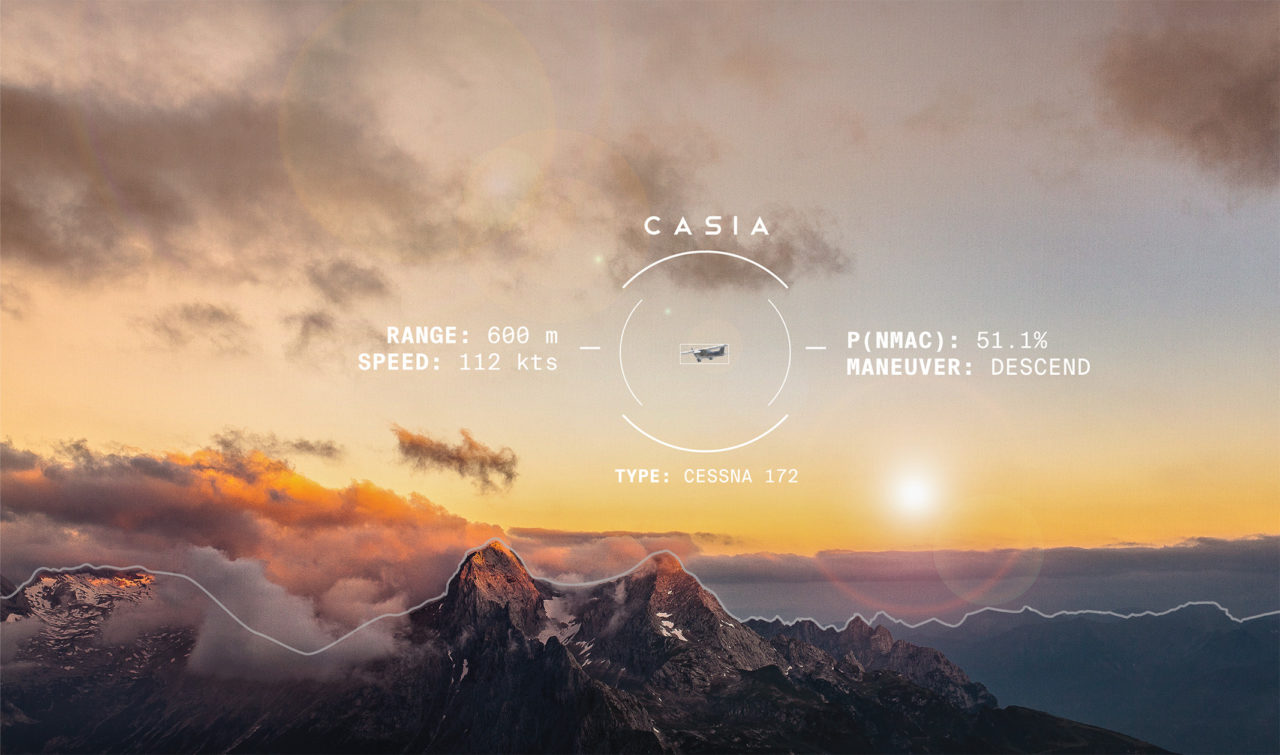
Casia imagery. (Iris Automation)
Iris Automation has released a commercially available avoid-and-detect solution for Part 107 drones, dubbed Casia.
Iris is currently working with the FAA to “confirm [the] technology is at the highest levels of readiness for national airspace use,” CEO Alex Harmsen told Avionics International.
Casia uses what Iris calls a “self-contained supercomputer” on a chip in conjunction with a dedicated camera and proprietary software to detect and classify other aircraft, determine whether they are a threat, and trigger automated maneuvers if necessary.
The current avoidance maneuvers entail “the safest, most conservative” options: descend and hover for multi-rotors and descend and loiter for fixed-wing aircraft. However, the company plans to include more complex avoidance options, such as navigation, in future updates.
The camera that Casia needs is a commercial-off-the-shelf option, though one is included in the base package since the system needs it to operate. Casia’s role is taking that image data and running artificial intelligence algorithms to detect and respond to what is around the drone. The whole system can generally be installed in under 30 minutes, according to Harmsen.

The Casia product package. (Iris Automation)
Casia is designed to facilitate beyond-visual-line-of-sight (BVLOS) operations. Harmsen said it’s capable of detecting non-cooperating GA aircraft at ranges up to 1,600 feet, with much higher ranges for cooperative aircraft.
Because of the focus on BVLOS flight, Iris is also offering waiver-writing services to customers “to ensure they get the necessary permissions for their unique UAS operations.” According to Harmsen, the company is able to leverage its regulatory knowledge to assist with system validations and collecting information specific to the operational region to ensure FAA approval.
Iris intends to continually update the software, “ensuring that your system stays up to date and never obsolete,” Harmsen said.
The system is presently compatible with all MavLink-based autopilots, and the company is looking to expand compatibility — Iris is developing integrations with other autopilots as well as unmanned traffic airspace service providers.
Casia is available immediately upon it’s April 26 launch, having already completed a beta test with 30 early adopter customers from five countries.